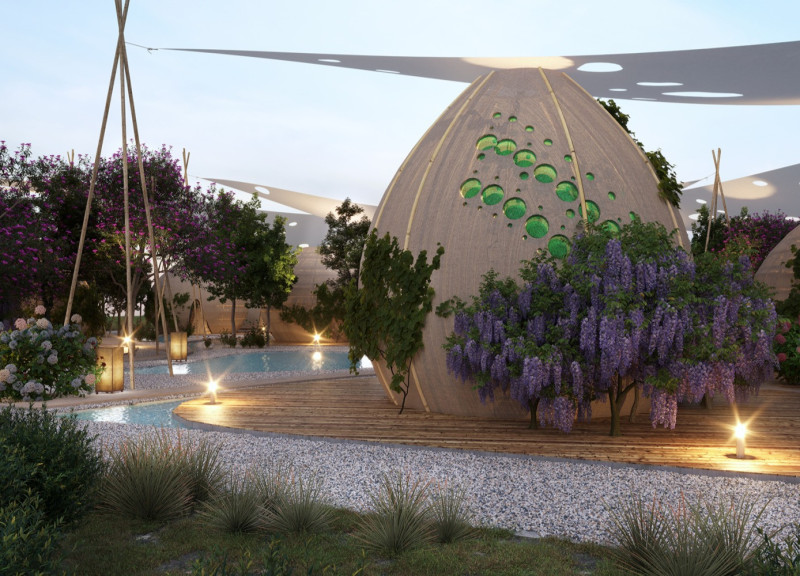5 key facts about this project
TILI WINE ITALY GUEST HOMES, known as Prima Spremitura, is located in the scenic landscapes of Italy. It offers an inviting approach to eco-tourism while reflecting the rich traditions of winemaking in the region. The design focuses on creating a welcoming environment that balances personal space with opportunities for social interaction among guests.
Architectural Organization
The layout consists of guest houses arranged in terrace-like formations, allowing for both privacy and a sense of community. Each unit is thoughtfully designed with essential spaces, including living rooms, bedrooms, kitchenettes, bathrooms, and terraces. Clear pathways connect the different areas, making it easy for guests to move around the site. This organization enhances both accessibility and convenience, encouraging guests to explore the intimate settings.
Materiality and Cultural Reference
Local clay serves as the primary construction material for the lodges. This choice connects the buildings to the surrounding landscape and reflects the area's agricultural heritage. The design features organic shapes that evoke traditional wine decanters made from ceramics, creating a link between the structures and the vineyards. This material aspect reinforces the project's narrative, deepening the engagement with local culture.
Natural Light and Water Features
Natural light plays a significant role in the design, with numerous green fixed windows allowing sunlight to enter the interiors. This approach creates a warm and inviting atmosphere, improving the guest experience. Additionally, water features have been integrated into the landscape, with paths and streams that introduce a calming presence. These elements enhance the sensory experience for guests, grounding them in the natural beauty of the site.
Landscape Integration
The design incorporates the landscape in various ways. Large canopies provide protection for the tops of the structures while allowing climbing plants to flourish. This integration adds a layer of life to the architecture, inviting nature into the environment. The visual connection between the buildings and the vineyard landscape enhances the overall experience, bringing together the elements of architecture and nature in a cohesive manner.






















































